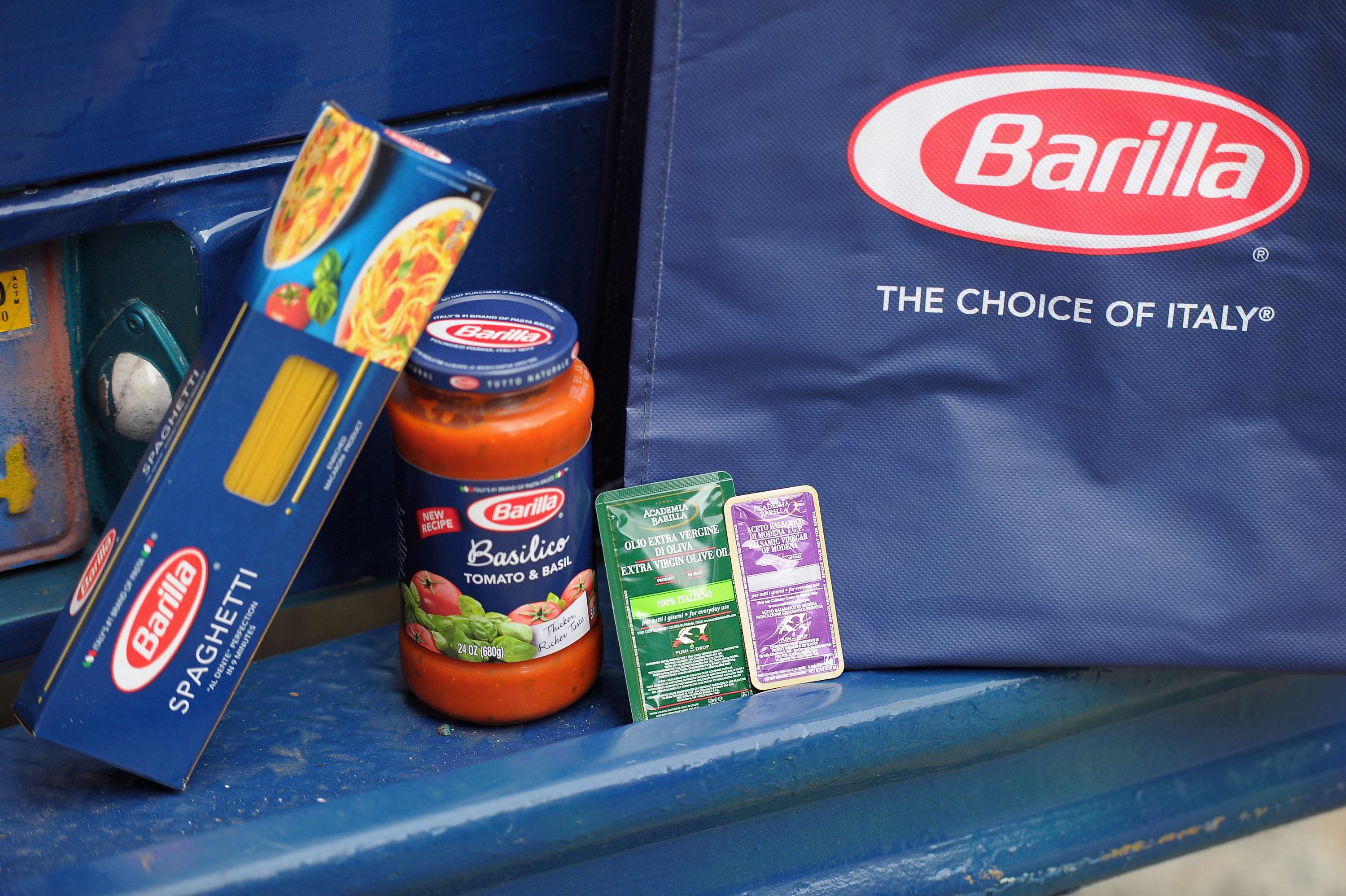For most of the 20th century, Americans didn’t know from pasta. Spaghetti was used as a catchall term for wheat noodles of all shapes, and tomato sauce was the default adornment—so much so that it came to be known by the alias “spaghetti sauce.” These were dark times. As Corby Kummer recounts in his masterful 1986 Atlantic history of pasta in America,
“Campbell’s, Heinz, and other manufacturers brought out canned macaroni with tomato sauce, joining Franco-American, which in the 1890s had begun to sell canned spaghetti, stressing that it used a French recipe. Cooking pasta long enough to can it safely institutionalized what was already a long-established practice, one for which Italians still deride Americans—overcooking pasta and thus robbing it of its savor and interest. … One typical recipe for tomato sauce omitted garlic and consisted of canned tomato soup with Worcestershire sauce added. In 1927 Kraft began marketing grated ‘Parmesan’ cheese in a cardboard container with a perforated top and suggested that the cheese be served as a topping for spaghetti with tomato sauce.”
Mocking the processed culinary horrors of yesteryear is like shooting fish in a barrel, so I won’t do too much of it here. In fact, I’ll note that canned tomato soup, while not exactly sugo di pomodoro, possesses a texture somewhat reminiscent of Italian tomato sauce, which is traditionally puréed in a food mill to make it smooth.
This is relevant because around the same time Kummer was schooling Atlantic subscribers in the meaning of al dente, food psychologist Howard Moscowitz was expanding “spaghetti sauce” horizons. According to a TED Talk by Malcolm Gladwell with the quintessentially Gladwellian title “Choice, Happiness, and Spaghetti Sauce,” Moskowitz discovered in the early 1980s that approximately one-third of Americans like their tomato sauce “extra-chunky.” Following this discovery, Prego “completely reformulated their spaghetti sauce and came out with a line of extra-chunky that immediately and completely took over the spaghetti-sauce business in this country.”
All this is a very long and complicated way of saying that history has conspired to get us to put the wrong sauce on our spaghetti. (Here I am referring not to pasta in general but to actual spaghetti: long, thin strings of pasta.) Spaghetti and tomato sauce are like Sonny and Cher: catchy enough together, sure, but actually better when working independently.
If, like me, you are among the ostensible thirtysomething percent of Americans who like a tomato sauce with a coarse texture, you should not be serving it on top of spaghetti. That’s because chunky tomato sauce doesn’t cling to spaghetti the way classic smooth Italian tomato sauce does; the tomato pieces evade your twirling fork and end up at the bottom of your bowl. (If you’re a chunky-tomato-sauce person, you should be serving your sauce with a short pasta like fusilli or penne, so you can stab hunks of tomato and pieces of pasta onto a single forkful.)
With spaghetti, you need a sauce that adheres steadfastly to the long strands of pasta, that lubricates them for optimal twirlage, that follows them onto your fork and into your mouth.
You need olive oil, basically.
Italians have known this since before the tomato made its way to the Old World in the Columbian Exchange: Long pasta all’aglio e olio, with garlic and oil, is one of the simplest, fastest, and most delicious pasta preparations imaginable. You mince garlic (and perhaps a hot chili) into morsels small enough to stick easily to spaghetti, and then you brown them lightly in olive oil. Combined with piping hot spaghetti and a few splashes of the starchy water you cooked the spaghetti in, the garlicky oil becomes a rich, flavorful, perfectly textured sauce. Chopped parsley is sometimes tossed in at the end for a little green pizzazz; I also like to throw in some arugula for its garlic-complementing bitterness.
Spaghetti all’Aglio, Olio, e Rucola
Yield: 4 to 6 servings
Time: 20 minutes
Salt
1 pound spaghetti
⅓ cup extra-virgin olive oil
8 garlic cloves, minced
1 medium bird’s eye chili or other hot fresh red chili, seeded and minced
Black pepper
1 small bunch parsley, chopped, thick stems discarded
2 cups arugula leaves, roughly chopped if large
1. Bring a large pot of water to a boil and salt it generously. Add the spaghetti and cook until al dente, usually 7 to 8 minutes, depending on the package instructions.
2. Meanwhile, put the olive oil in a large skillet over medium heat. When it’s hot, add the garlic and chili and season with salt and black pepper. Cook, stirring frequently, until the garlic is lightly browned, about 5 minutes.
3. Reserve about 1 cup of the spaghetti cooking liquid and then drain the spaghetti. Add the spaghetti to the skillet and toss to distribute the garlic and chile evenly throughout the pasta, adding the reserved cooking liquid as needed to help coat the spaghetti with oil. Add the parsley and arugula and toss to combine. Taste and adjust the seasoning, and serve hot.
Previously in You’re Doing It Wrong:
Eggplant
Polenta
Olives
Tomato Sauce
Pesto
Lasagna
Pizza
